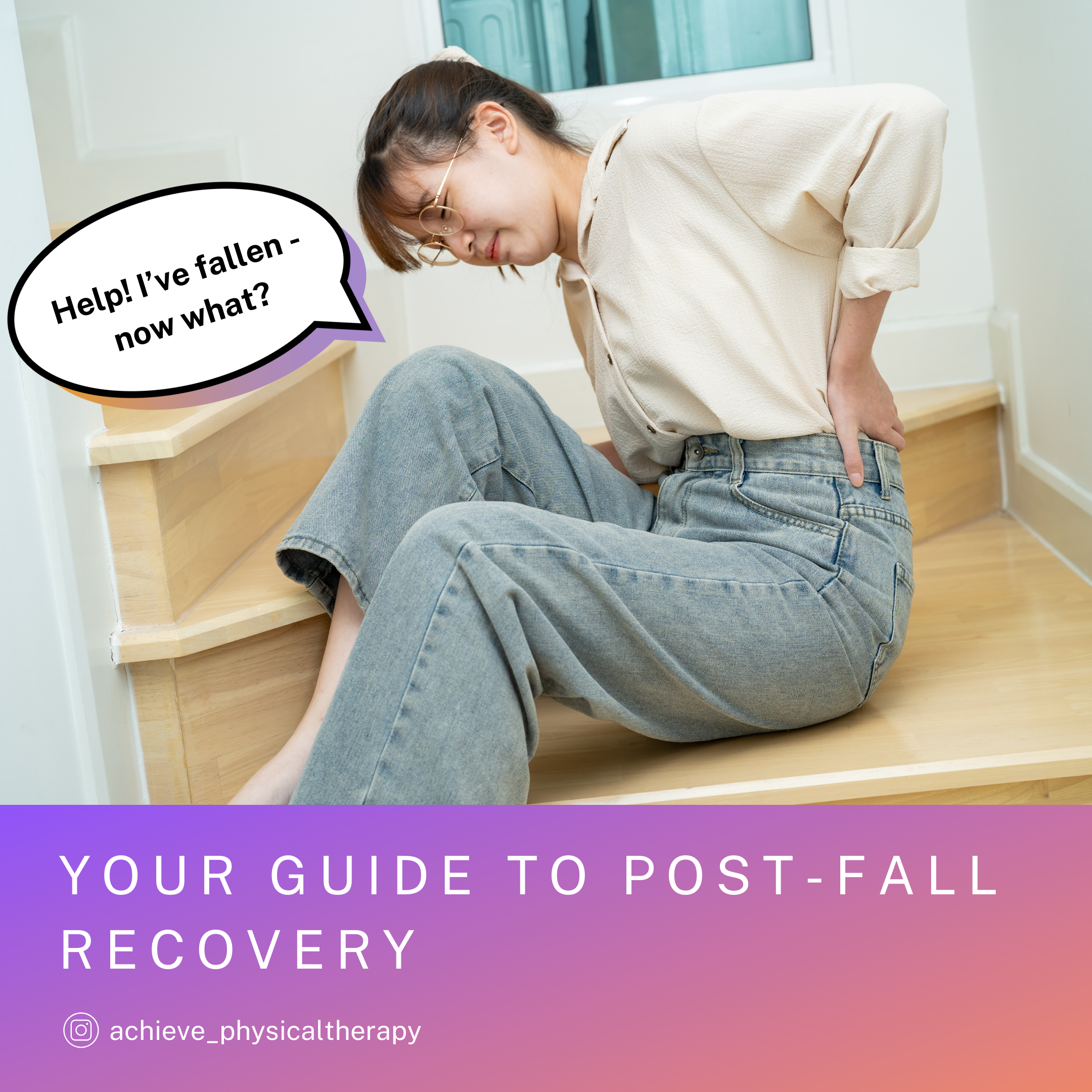
Understanding Post Falls: A Guide to Recovery Through Physical Therapy
Have you recently experienced a fall and are wondering what steps to take next? Falling is very common, and knowing how to address the aftermath of a fall is crucial, especially for a swift recovery. While fall prevention programs are of the essence, accidents can still happen. In such cases, understanding what to do after a fall and seeking appropriate treatment is of the utmost importance.
Before learning about the appropriate treatment post fall, it’s important to understand the causes of falls. Click here to learn the difference between slips and trips.
What to do after I’ve fallen?
Experiencing a fall can be a disorienting and alarming event, leaving you uncertain about the next steps. Here’s a guide to help you navigate the aftermath of a fall:
- Assess Your Condition: Take a moment to assess your body and identify any areas of pain or discomfort. If you can move, carefully check for injuries, paying attention to joints and areas of impact.
- Seek Medical Attention: If you experience severe pain, have difficulty moving, or suspect a fracture, seek immediate medical attention. Emergency services or a visit to the emergency room can provide necessary care.
- Contact Your Healthcare Provider: Even if your injuries seem minor, it’s crucial to inform your healthcare provider about the fall. They can guide you on the next steps and recommend appropriate care.
- Consider Physical Therapy: Physical therapy is a highly effective option for post-fall recovery. A trained physical therapist can assess your injuries, develop a personalized treatment plan, and guide you through exercises to regain strength and mobility.
Why Choose Physical Therapy for Fall Recovery?
Physical therapy is a holistic approach to post-fall recovery, addressing both immediate and long-term concerns. Here’s why it’s often considered the best option:
- Tailored Treatment Plans: Physical therapists create customized plans based on your specific needs and the nature of your fall. This ensures targeted and effective rehabilitation.
- Improving Strength and Balance: Physical therapy sessions focus on enhancing muscle strength and balance, key factors in preventing future falls. This proactive approach is crucial for overall fall prevention.
- Pain Management: Physical therapy incorporates techniques to manage pain and discomfort, facilitating a smoother recovery process.
- Enhancing Mobility: Therapists work on improving your range of motion and mobility, helping you regain independence and confidence in your daily activities.
- Preventing Recurrence: Through targeted exercises and education, physical therapy aims to reduce the risk of future falls, promoting long-term well-being.
In conclusion, while fall prevention programs are essential, accidents can still occur. If you’re interested in learning more about fall prevention programs, click here. Knowing what to do after a fall and seeking appropriate treatment, such as physical therapy, can make a significant difference in your recovery journey.
Physical therapy can play a crucial role in addressing the aftermath of a fall. It involves a comprehensive assessment of your physical condition, taking into account the specific areas impacted by the fall. The therapist then designs a tailored plan that includes a combination of exercises, stretches, and manual techniques. During the sessions, you’ll work on rebuilding muscle strength, improving joint flexibility, and enhancing overall balance. These targeted interventions not only promote healing but also reduce the likelihood of future falls. Moreover, physical therapists provide education on home exercises and modifications to daily activities, empowering you with the tools to maintain progress outside of the therapy sessions.
Remember, the key to a successful recovery lies in taking proactive steps and seeking professional guidance to regain your strength and prevent future falls.
